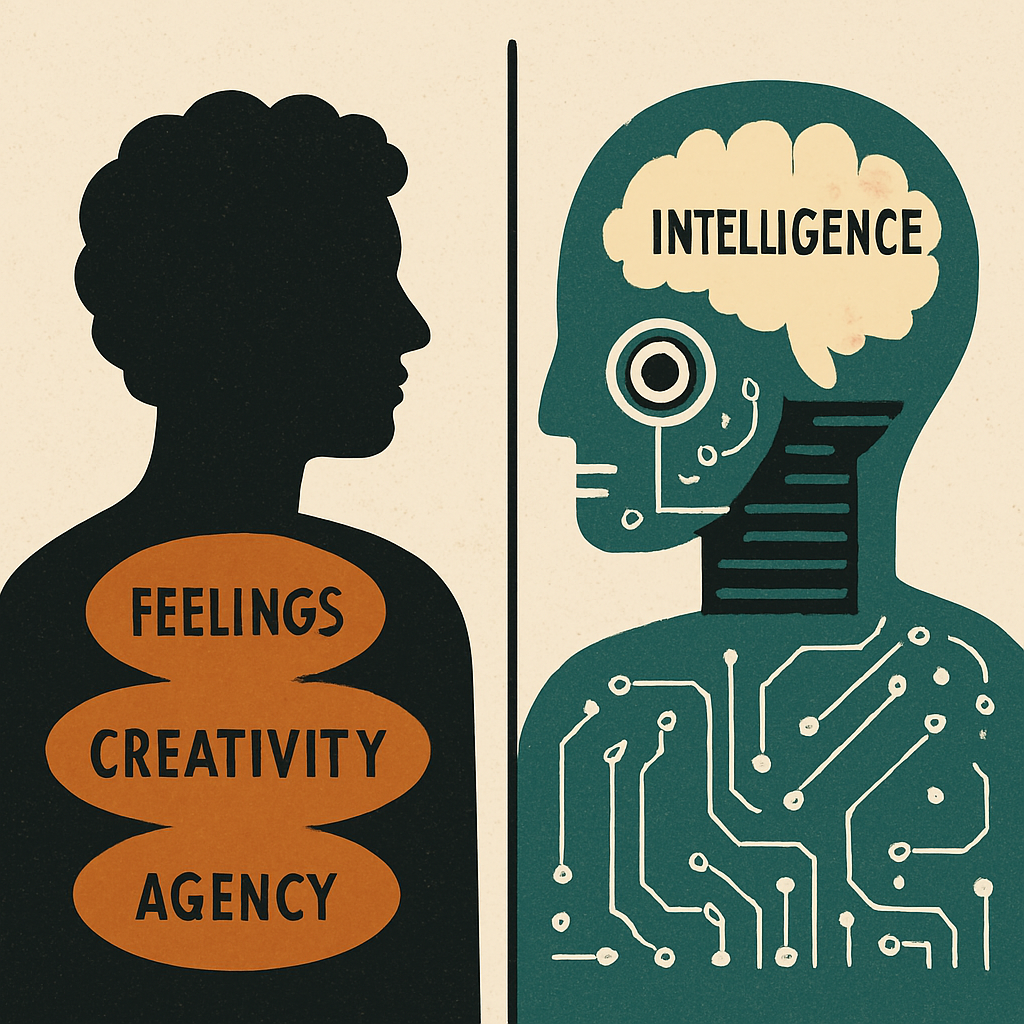I don’t consider myself to be a great presenter. As a matter of fact, every time I finish a presentation, I find myself thinking about how many things I screwed up and could have done much better. However, whenever I attend a conference I face the cruel reality: my presentations are way better than most research presentations. If I am really not that good, it can only mean one thing: researchers generally suck at presenting their work. (This is in fact one of the reasons I am against organizing research conferences around oral presentations. But this is another discussion I will leave for another post).
So, if you have any doubts of whether you could be in that category of good researcher/poor presenter, you can do a quick test: Watch the video below. If you think your last presentation is well summarized in the video, you definitely fit into the group. Even if you don’t, you might find some tips or advice of interest to you in the rest of this post.
OK, so what are the three basic rules to make a decent presentation? Easy: (1) Prepare yourself, (2) prepare yourself, and (3) prepare yourself.
At this point, you might already be tempted to stop reading because you disagree with what I am saying. I have found several reasons why people disagree with something as obvious as the fact that making a good presentation requires preparation, but I think all of them are summarized in the two following:
(a) I’m a natural: Maybe you are the kind of self-assured person that thinks that has great presentation skills and those shine best the more you improvise. I was pretty close to this myself some time ago. But if you fit into this category, there is a very easy test you can do: tape yourself on video on several presentations. If you still think you are great and need no preparation or further skills, congratulations! But chances are that then you realize how many things you have been doing wrong and how much you can improve. All great presenters I know stress the fact that preparation is key, period.
(b) I’m a researcher, not a TV Star: On the other extreme, you might be aware of your limitations but might think that this is not such a big deal. You are a researcher and live in the world of formulas, theories, or code. You could care less about what people get from your talks and you would be happy standing up and doing the chicken, chicken, chicken presentation. And this is not an exaggeration: I have seen junior researchers that are still editing slides a couple of hours before their scheduled presentation in a top conference. My take on this is the following: if you think presentation skills are not part of what is required in a researcher, you are wrong.

So by this point I will suppose that you are convinced of the importance of preparing research presentations. Ideally, you have also taped yourself and found that there are many things to improve. The question is what to do next. Obviously, I cannot pretend to summarize a presentation skills course in a post. There are thousands of resources out there in the form of books, videos, or similar that you will find without problem. But I do think that I can pinpoint a few issues that are important and tricks that might help.
First, I think it is important to separate two kinds of “preparation”: (1) mid/long-term preparation aimed at improving your skills, and (2) short-term preparation for your next presentation.
Improving your skills
Again, you can find many books and resources on how to do this. But some of the things that you should at least consider:
(1) Tape yourself:
This will make you aware of the weak points and where you need to focus your efforts
(2) Enjoy the stage:
Some people have a really hard time every time they go onto stage, and this shows. There are many things you can do to learn techniques and improve on this that go from playing in a band to taking some acting and performance lessons (I did this and found it very useful and enjoyable)
(3) Read about it:
No need to become obsessed. But reading a couple of books or watching some videos giving you tips is not going to hurt. And remember, this is part of your expected skill set as a researcher. If you want a starting point, I can recommend you read a short 12 page essay on “How to give an academic talk v4.0” by Paul N. Edwards from U. Michigan.
(4) Rehearse the techniques:
It is very good if you have situations where you can rehearse what you learn from the previous. Actually, many of the techniques can be applied in “real” life (e.g. when talking to your boss). Others require of a more realistic setting. I have been lucky to use the courses at the university as a rehearse playground for improving my skills
(5) If you need help, look for it:
I have seen many cases of researchers with severe communication problems when presenting. Maybe I sound too harsh here, but I don’t think this is acceptable. If you really want to be a researcher but don’t think you can get to an acceptable level of presenting either (a) have some co-author present for you or (b) find some professional help. And this latter would be my preferred option. It is not so hard nowadays to find coaches or places that can help you out and if you agree this is an ability that you need in your job (and, again, you should agree), it is worth that you invest on it.

Preparing your next presentation
Regardless of whether you manage to improve your general presentation skills or not, you will have to face your next presentation sooner or later. When preparing the talk, you should focus on its two main components: the slides, and the talk itself.
The slides
Again, there are many resources out there on how to prepare your slides, the style, the design.. I was lucky to attend a course on Zen presentation style by the guys at Presentaciones Artesanas. Zen-style presentations are the kind of slides you will see at TED, for instance. I try to bear some of the techniques in mine but (a) I am not a professional presenter (that is, although presentations are important in a researcher’s life, I have other things to do), and (b) sometimes, transmitting scientific rigor in a very graphical style is not easy (actually, according to Tufte, even Powerpoint should be banned from scientific publications). However, I do recommend to understand some of the design concepts behind the Zen style and maybe use some of them as a basis.
Once you have found your style, you will need to do the following tasks:
(1) Know your audience:
Before you start preparing the presentation, take some time to understand who you will be talking to. It’s not the same to do a talk at a conference than pitch your work to business people, present to a prospective employer, or, like I did last week, try to convince high-schoolers of how cool Computer Science is.
Even if you are only focusing on research presentations at conferences, they are not all the same! Sometimes you will be giving a talk in a setting where everybody is an expert in what you are talking about, while in other occasions only a tiny fraction of the audience is working in your same field. In my case, I won’t use the same kind of approach if I am presenting at a Recsys conference where everybody knows about Recommender Systems than at a generic one like WWW, where I can only assume that most of the audience does not know the topic in depth.
It is also important to look at the program schedule. The name of your session and the talk immediately before and after yours is going to give you more information about who might be sitting in. If you are presenting in a conference with multiple tracks, the talks scheduled at the same time as yours will give you some hint about who is *not* going to be attending yours.
(2) Find “the message”
Find a simple take-away message that you want to get through to your audience. In many cases it will be something along the lines of “look how important and interesting my research is, please go ahead and look more into it by reading the paper… and don’t forget to cite it in your next publication”. But in other to transmit that idea you need to make your point. Therefore, find the answers to: (a) what problem does your work solve, (b) what makes your work different from other solutions, and (c) why should anybody care about it. These three questions should help you find the message. Stick to one/two ideas and refer the audience to the paper for more details. Trying to squeeze in too many messages in too little time is a recipe for disaster.
Some researchers like to add another secondary message thread: (d) I am really smart and what I did is so complicated you might not even grasp it… I particularly dislike this kind of presentations and find them pretentious and boring (maybe because I am not so smart). But hey, I know some people have made quite a career of this so you should be aware.
(3) Prepare a script
Once you have identified the “main message,” you are ready to prepare the script of the slides. I usually start off by having a bunch of empty slides with only the title on them. By having this, I can see if I might be going over time, need to sort things out differently… The script will depend on the kind of talk and time you have to speak. But in general, it will have a structure such as:
- Introduce context and situation
- Formulate problem and why it is important to solve
- Main message (Solution to the problem, consequences, details on the solution…)
- Summary on problem and solution
- Future work and things to do
The script is important, but be ready and willing to change it. You are likely not to get it perfect from the start and as soon as you start adding more detail you will see a clearer picture. Don’t make the “sticking to the plan” hit you back.
(4) Make the visuals
Maybe you think this is the least important part of your presentation. In my experience, I have come to value the visuals very much. Actually, most of the time I spend in preparing some presentations is looking for appropriate visuals that back up and re-enforce the “main message”. The less familiar the audience is with your topic, or the less hardcore researchy it is, the more time you will want to spend choosing appropriate visuals. Some well-chosen pictures will make your message more sticky. And you might find some images that are so powerful that might make you go back to your script and twist it a bit.
The talk
Once you have the slides more or less ready, you can start preparing the talk itself. Bear this in mind: if you prepare the slides but not the talk, your presentation is likely to suck. Some ideas and tips that can help you in the process:
(1) Tape yourself
As I mentioned before, taping yourself is one of the best tools I have found for improving your presentation skills. It is also an amazing tool for preparing your next talk. If you watch a video of yourself rehearsing the talk, you will be able to analyze what you are explaining wrong, where you are wasting your time, what jokes don’t make sense… Besides, it is a perfect timing tool: not only you will get the exact duration of your talk in the video but also how you distributed it. This will allow you to make sure that you are devoting the right amount of time to getting the “main message” through.
(2) Test technical issues as many times as possible
Don’t need to mention Murphy’s law, I suppose, but if something can go wrong, it will. No matter how much I check things over and over, there are always technical issues that catch me by surprise.
In my last talk, I had a couple of videos that I knew could be problematic. I spent a lot of time in making sure they were working in the presentation. I even tried my laptop with a secondary monitor to make sure. I asked the host well in advance to make sure that I had the possibility of connecting the audio output of my laptop. And on the day, I went to the hall and tested the audio. I was even going to test the videos but the audience was already half in, so I preferred to keep the surprise and tested with some random music instead (big mistake here!). What happened? Videos did not show, so I had to improvise opening them with another program and that did not work very well either because of a limitation on the projector’s resolution, I think.
In my case, I like to put myself in situations of technological risks and I like the feeling of doing a complex live demo in a presentation that I know can fail (I guess is like the adrenaline rush I used to have when playing in a concert). But I have to admit that the safest advice is to keep technical challenges as simple as possible. And be anal in checking many times those that you know are likely to fail.
Of course, checking technical details means, among other things, that you need to be in the room for your talk well in advance and test the presentation in the same conditions you are going to it later (even if that means missing one of the coffee breaks in the conference!).
(3) Be ready for improvising
And my last piece of advice may seem to contradict the rest. I have been talking about the importance of preparing many details of the talk. However, a presentation should always leave room for improvisation and adaptation. There is nothing worse than the feeling that the speaker has learned the conference by heart, and is not making any attempt to connect with the audience and the context. Besides, there might be elements during the talk that might force you to improvise: a technical issue, different audience that you expected, a reaction from somebody…
You should be able to put any kind of external element into your presentation while not losing the main message. I don’t like having to skip slides since it gives the impression that you are in a rush to finish, but many times there is no alternative: You might have lost precious time in trying to play that video, or maybe went too far in the introduction and now you need to cut short. It is again very important that you have a clear picture of what the “main message” is and improvise by skipping those slides that are not needed to understand it.

I hope that some of this advice is useful in your next presentations. But I would like to hear from you: how do you prepare your talks? Any tips or suggestions you want to share in the comments?



